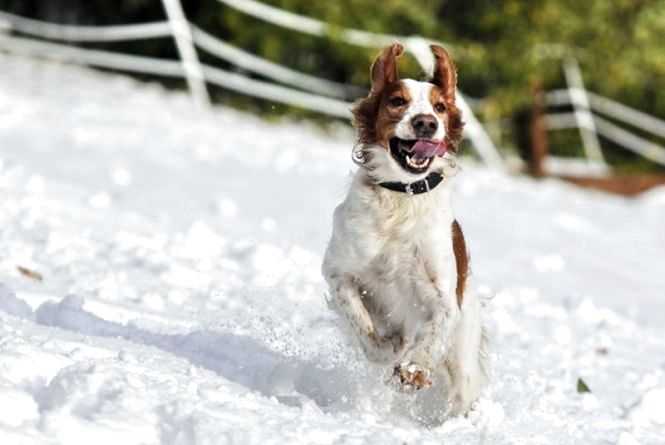Sustainability: a topic that is more important today than ever before. At least since “Fridays for Future”, the aspects of climate protection and sustainability have been present in the media and in our everyday lives at all times. Thousands of people worldwide take to the streets every week to campaign for stronger action to protect the climate and curb global warming. Numerous studies show that this is urgently needed. In the dog world, too, the call for sustainability is slowly but surely arriving. More and more dog owners are asking themselves how this can be implemented. In this guide, we will show you how you can do your small part on this topic, how to make everyday life together with our beloved four-legged friends a little more sustainable and environmentally friendly.
Sustainability — what does that actually mean?

The term “sustainability” originally comes from forestry: in view of a raw materials crisis, a Saxon forester demanded in 1713 that only as much wood should be felled as could grow back at the same time.
Today’s use of the term still roughly corresponds to this requirement. According to an official definition, sustainable development should enable both the current needs of people and the needs of future generations to be met. This means, for example, that the world population should still have sufficient resources and habitable living space in the future.
Basically, it is about the responsible use of resources!
And everyone can easily integrate this responsibility into their everyday life: be it the (occasional) renunciation of meat, the conscious selection of products with a sustainable and socially just future, or a fundamental refrain from consumption. There are many small adjustment screws that you as a dog owner can use to reduce the ecological paw print of your four-legged friend!
Dog ownership and sustainability – how does that fit together?
If you want to live sustainably with a dog, things will be anything but easy for you. Lots of plastic bags, plastic toys in plastic packaging and food with a high meat content in aluminum cans sound anything but sustainable.
A Swiss study that was only recently published came to the conclusion that the type of feeding and car trips that are taken with the dog for leisure purposes have an impact on the environmental balance of our four-legged friends.
Basically, however, there are many small adjustment screws that you can use step by step to make your everyday life with a dog more sustainable and environmentally friendly. In the following tips and tricks we explain how you can best go about it!
How can you practically implement sustainability in everyday life with a dog?
Small changes can already make a big difference. If you want to live more sustainably as a dog owner, you don’t have to turn everything upside down from now on. It is often the little things in everyday life that lead to plastic waste and resource conservation. Above all, it is important to develop an awareness of your own consumption and to try out more sustainable alternatives step by step.
Tips & tricks for more sustainability in everyday life with a dog

Sustainable dog food
Dog food is what we most often buy for our pets. Here, too, there are sustainable alternatives. You should pay particular attention to the production, animal husbandry, and other ingredients. Choose a good quality dog food that has been produced under environmentally friendly conditions.
Reduce packaging waste
Pay attention to the packaging, especially with dry food, and dispose of it properly. Unfortunately, the majority of feed still comes in plastic bags — but there are also many manufacturers who already sell their products in paper bags. Paper is a lot more recyclable than plastic! It is therefore particularly important that plastic packaging is properly disposed of. This is the only way to ensure that they are actually recycled and not incinerated.
Incidentally, the tin cans that we find with classic wet food are not as harmful to the environment as it seems at first glance: the tinplate can be recycled as often as you like if it is disposed of correctly. Nevertheless, we should be more careful with cans for health reasons: the plastic coating inside many canned goods is contaminated with BPA, which has a carcinogenic effect, among other things.
You can even get many treats and chews loose in specialist shops — as so-called “bull food”. You can also easily bake the treats for your four-legged friend yourself. For example, you can conjure up really tasty sesame-peanut butter biscuits for dogs from just 150 grams each of wheat flour, whole wheat flour, and rye flour.
In addition, it is always a good idea to feed them leftovers from time to time. Leftover potatoes make a balanced meal with an alternative protein source such as cottage cheese, cream cheese, tofu or mashed beans, some seasonal vegetables, and a dash of vegetable and fish oil. If vegetables are left over, they can be mixed with oatmeal as an energy source, a source of protein, and oil to make a good feed.
What should you pay attention to when buying sustainable products?

It is particularly important to rely on durable products of good quality. You should also pay attention to resource-saving, preferably plastic-free and preferably regionally produced products!
Use sustainable poop bags
Dog owners usually use at least 1000 poop bags per year. They then end up in the waste incineration plant or, in the worst case, are simply thrown out onto the street — and that too indefinitely. Because plastic does not rot, which is why plastic waste in the environment is also one of the greatest environmental challenges facing mankind. A no-go for sustainable dog ownership. One solution here is biodegradable poop bags made from recycled paper or cornstarch.
Excursions by bike instead of by car
After work, go for a walk in the woods, go hiking at the weekend or go to the dog school. Without a doubt, the car is a convenient means of transporting dogs — and therefore the second most important factor when it comes to a sustainable dog life. Especially for shorter distances, the car can often be replaced by a well-known bicycle. In addition, it is of course a good idea to keep exploring new walks around your own home or to make the usual round more varied with hidden object games.
If you choose to ride a bike, you are not only doing something good for the environment, but also for your own health. A win-win situation!
How about a garbage collection campaign while you are out with your darling? A great win-win situation – your dog gets its run and you can do something for the environment!
Sustainable fur care
When it comes to proper grooming, many animal lovers often fall into the buying trap. In view of the large selection of brushes and shampoos, it is easy to buy the wrong one. By finding out in advance about the care needs of your four-legged friend and the right products, you can do your part to reduce your dog’s ecological paw print. A good shampoo and a utensil are often sufficient. Both should be environmentally friendly products at best. Dog soap that can be bought loose is a good idea here instead of a shampoo that comes in a plastic bottle. In addition, the well-known plastic brush can be exchanged for a durable wooden dog hairbrush from local forests. Of course, you can also make your own shampoo or dog soap!
You should also not forget to take a look at the ingredients and the origin of the product in order to avoid long transport routes, microplastics, palm oil, and other questionable ingredients.
Sustainable dog accessories

Your dog needs activity. You can also capitalize on sustainability when it comes to toys and brainteasers. How about an everlasting and washable chewing bone made of natural rubber or just a rope? When buying, pay attention to the most environmentally friendly manufacturing processes and short transport routes possible, so as not to further promote air pollution and climate change.
You can also take an important step with the basket. Here, too, you should prefer handmade and regionally produced baskets made of wicker or jute to a plastic basket. Does your four-legged friend love to relax in a cabin? Then just try to build one yourself out of old, processed wood!
A stable and durable bowl is also part of the basic equipment. Here you should preferably use stainless steel or ceramic and avoid plastic. Ideally, the bowl is even handmade and from regional production.
The same applies to the purchase of a durable collar and a sustainable leash. This way you also avoid constantly buying new ones. However, if this is unavoidable, just try to buy things in upcycled form.
Finally, it is often enough to question your own consumption. Is this really necessary? do i really need this Because the most sustainable consumption is that which does not occur in the first place!
In summary, you can see that it doesn’t always have to be complicated or expensive to do something for your own environmental balance. Even a few small changes in everyday consumer behavior and greater awareness can already be important steps towards a sustainable future! There are countless possibilities and you should definitely not implement everything at once! Just try to get a little better every day – even as a dog owner.
Is sustainable living with a dog expensive?

Under no circumstance! It’s even cheaper in the long run. If you make conscious purchasing decisions by buying durable products of good quality and limiting your consumption to the bare minimum, you will notice how much money this approach saves in the long run.



























